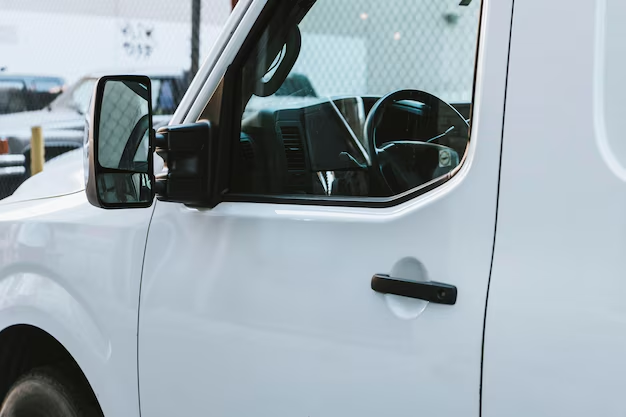Safely Moving Your Fridge: How to Transport a Refrigerator in a Pickup Truck
Transporting a refrigerator might sound like a daunting task, but with the right preparation and guidance, you can make this seemingly daunting task manageable and efficient. This guide will walk you through the steps of safely moving a refrigerator using a pickup truck, covering things you need to know from start to finish. Whether you're moving to a new home or picking up your fridge from a store, ensuring damage-free transportation is paramount.
📦 Preparing for the Move
Before you even think about loading the refrigerator onto your pickup truck, there are several important preparation steps to consider:
Measure & Plan
Measure the Refrigerator: Before you begin, measure the dimensions of your refrigerator. Check both its height and width, ensuring they fit comfortably in your pickup.
Plan the Route: Consider the pathways and doorways the fridge must pass through before reaching your truck. Will it fit without tilting? Make sure to clear these areas for easy passage.
Pickup Truck Size: Ensure your pickup truck bed can handle the refrigerator. Most standard refrigerators can fit in a full-sized pickup, but a compact truck may require additional considerations.
Gather the Right Tools
Having the right equipment is crucial:
- Appliance Dolly: Essential for moving heavy appliances like fridges. This dolly has straps and padding to protect the appliance during transport.
- Moving Straps/Rope: Use these to secure the refrigerator in the pickup truck.
- Blankets or Padding: Protect your fridge's surface with blankets or padding to avoid scratches and dents.
- Helper: This job often requires two people. Get a friend or helper to assist.
📐 Steps to Safely Move Your Refrigerator
Once you've prepared the necessary supplies and measured everything, you're ready to tackle the task of moving the fridge.
Step 1: Empty and Unplug the Fridge
Before moving, ensure your refrigerator is fully empty. Remove all food items and shelves, which can be packed separately. Ensure the power is off, and give it a few hours for the internal components to reach room temperature to prevent condensation issues.
Step 2: Secure the Refrigerator
Tape Doors and Cord: Use strong tape to secure the doors and the power cord to prevent them from swinging open or dragging.
Use the Appliance Dolly: Tilt the refrigerator slightly and slide the dolly beneath it. Secure it with the dolly’s straps for extra stability during movement. This will require the help of your assistant.
Step 3: Loading onto the Pickup
Carefully navigate the fridge on the dolly towards the pickup. The best approach often involves a ramp:
Set Up a Loading Ramp: This can simplify the task significantly and minimize lifting.
Lift and Push: With the help of your assistant, tip the dolly backward so the wheels roll up the ramp smoothly. Take precautions not to tip the fridge too far.
Positioning on the Truck: Once in the truck bed, position the refrigerator upright against the cab of the truck. This position is crucial for safe transport as laying a fridge on its side can cause damage to its internal components.
Step 4: Securing the Load
Once the refrigerator is in place:
- Use moving straps or ropes to secure the fridge from tipping during transit.
- Wrap ropes around the fridge and through anchor points in the truck bed.
- Double-check that everything is tightly secured and that there is enough padding between the fridge and the truck to prevent dings or scratches.
🚚 Transporting the Refrigerator
With everything secured, it's time to hit the road. Here are some tips for a smooth journey:
- Drive Slowly: Take corners gently, and avoid sudden stops.
- Monitor the Load: Check the fridge’s position after navigating sharp turns or bumpy roads to ensure nothing has shifted.
🔄 Unloading and Reinstallment
Upon reaching the destination, the process of unloading begins, which is effectively the reverse of loading it into the truck.
Step 1: Safely Unload
Use the Ramp: Set up the loading ramp for unloading if used initially. This helps control the descent of the fridge.
Assist and Guide: Work with your helper to carefully guide the fridge down the ramp and into the new location.
Step 2: Rest and Reset
Upright Position: Allow the refrigerator to rest in its new position for several hours (generally 3-4 hours is recommended) before plugging it in. This helps fluids in the compressor to settle, reducing risk of damage.
Reassemble: Once settled, reinsert shelves and restock your food items.
📑 Quick Reference Guide
Here’s a quick bullet-point summary of the essential steps and tips to ensure a successful refrigerator move in a pickup:
- 🛠️ Preparation: Measure, plan routes, and gather tools.
- 🛡️ Safety First: Clear fridge contents and secure doors.
- 🛒 Moving: Use a dolly; lift using a ramp with help.
- 🛻 Transport: Keep upright; secure with straps.
- 🚦 Driving: Slow and steady; monitor load frequently.
- 🏡 Unload with Care: Use ramps and allow it to rest before turning back on.
By following these comprehensive guidelines, you can ensure that your refrigerator makes it to its new home safely and without damage.
By considering all these factors, you can empower yourself to undertake fridge transportation with confidence, ensuring both your appliance and personal safety are maintained throughout the process. Happy moving!
